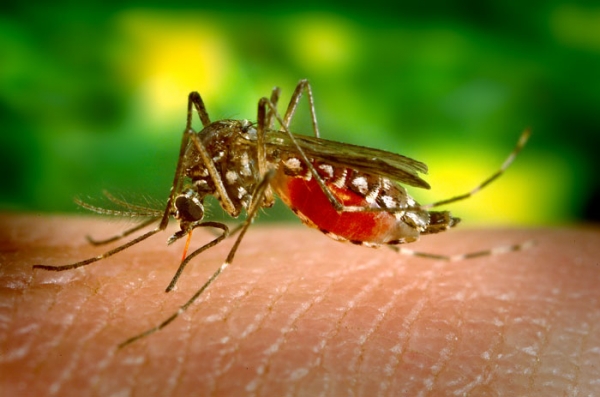Swine Flu – The Rising Pandemic Disease of the 21st Century


Swine Flu, also called A (H1N1) pdm09 Influenza Virus, is witnessing a sudden surge in most part of India, especially the western and southern states. India witnessed worst outbreak of Swine Flu in 2009-10 when nearly 50,000 people were affected and more than 2,700 losing their lives across the country. This year, there is an alarming rise in Swine Flu cases as many people have already lost their lives across the country.
What is Swine Flu?
Swine Flu has been the most predominant seasonal flu across the world over the past seven years. As more and more cases of Swine Flu are now reported across the world (including India), the World Health Organization (WHO) declared the disease as a pandemic, raising its alertness to the maximum level.
Swine Flu or H1N1 Flu is actually a respiratory disorder and is caused by a type of Influenza-A virus that started in pigs. It started in the state of Veracruz, Mexico and soon started spreading worldwide. Swine Flu cases see a spike usually with the onset of winters. Like typical seasonal flu, Swine Flu also can be typically prevented by getting vaccinated every year apart from taking the usual precaution.
Symptoms
People affected with Swine Flu may experience:
- Fever (but not always)
- Weakness
- Extreme breathlessness
- Headache or sore throat
- Body aches – pain in the muscles
- Lethargy
- Loss of appetite
- Nausea/vomiting
- Cough – can be dry
- Malaise or high fever (101 Fahrenheit for more than 3 days)
- Chills
- Sneezing or runny nose
Risk Factors
Pregnant women, children (under 5 years) and the elderly are at high risk of getting severe infection of Swine Flu. Risk is higher in people who spend time in an area where a large number of people are infected by it. Below are the groups that are at higher risk for becoming critically ill if they are afflicted with Swine Flu:
- Elderly (over 65 years)
- Young adults (above 12 and under 19 years) who are on long-term aspirin treatment
- People with less/no immunity due to a disease like AIDS
- People with chronic diseases like diabetes, heart disease, asthma or neuromuscular disease
Causes
Swine flu is caused by an influenza virus that generally only infects the pigs. However, unlike typhus that can be transmitted by ticks or lice, Swine flu is usually transmitted from person to person, not from animal to person.
How does it spread?
Swine flu is an extremely contagious. It spreads through mucus particles and saliva. It can spread through cough, sneeze, touching germ-covered surface and then simultaneously touching eyes or nose. When people with Swine Flu sneeze or cough, the virus spreads into the air around and these drops remain suspended in the air or may land on surfaces that are often touched. When someone comes in contact with these drops, they are most likely to get infected with the virus in the same way as a seasonal flu.
What is the treatment?
Doctors treat Swine Flu with the same medicines that are usually prescribed to treat seasonal flu. Medicines used for seasonal flu have been observed to have worked well in treating Swine Flu. The first 48 hours are most critical for effective uses of these medicines after the onset of the symptoms. Antibiotics do not work in treating Swine Flu as H1N1 is a virus and antibiotics are used only for bacterial infections.
However, viral infection may compromise the immunity system of the body to the level that a patient might get infected with some or the other bacterium. Doctors may prescribe antibiotics in addition to other medications in such cases.
Preventing Swine Flu
The following are the tips to prevent Swine Flu:
- Germ-proof the skin: Wash hands well and often. Use warm water and soap and rub hands together for at least 20 seconds.
- Keep distance: Being too close, less than 6 to 10 feet is open invitation to airborne viruses. This means avoiding close contact with people who have fever and are sneezing or coughing.
- Contact a doctor immediately when Swine Flu is suspected.
- Use face masks: Although it is not necessary for people who don’t work in healthcare jobs, wearing face mask is a safer bet. People with Swine Flu should also wear face mask so the virus is contained better.
Swine Flu Myths Myth #1:
Although it is termed as Swine Flu, Swine Flu is not transmitted through pigs and it cannot be contracted by consuming pork products. Myth #2: Swine flu does not spread through physical contact. Individuals come in contact with swine flu virus when a patient coughs or sneezes in proximity. Myth #3: Many believe that people get infected by Swine Flu only once in their life. This is not true. The H1N1 virus works like any other seasonal flu virus that may re-infect in the coming years. Myth #4: Do not avoid taking medication thinking it to be simple cold. Correct medicines have be taken within 48 hours of the flu symptoms, as prescribed by a physician. Myth #5: Most people think that by getting vaccinated in the summer they are safe. This is not true. Getting vaccinated every winter is mandatory to prevent Swine Flu.
© Copyright 2024. Apollo Hospitals Group. All Rights Reserved.
 +91 8069991061
Book Health Check-up
Book Health Check-up
Book Appointment
Book Appointment
+91 8069991061
Book Health Check-up
Book Health Check-up
Book Appointment
Book Appointment







